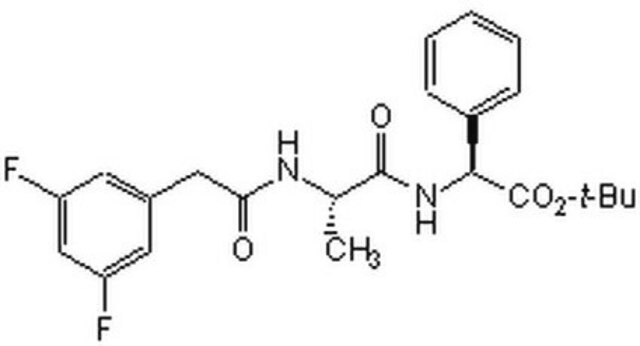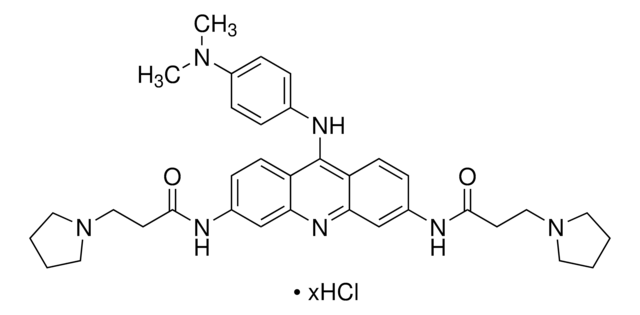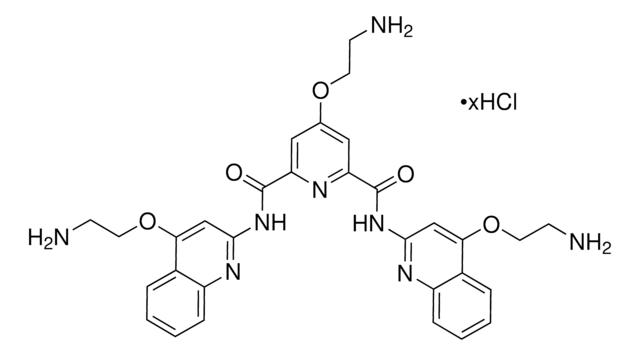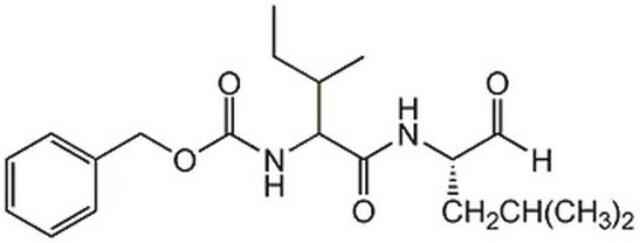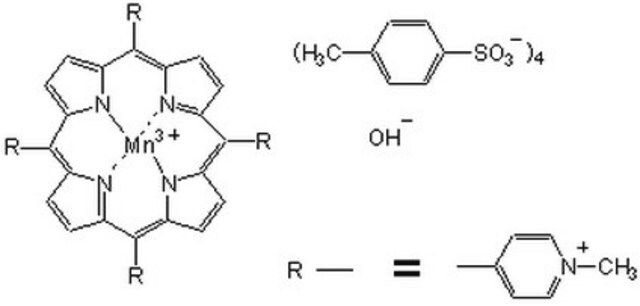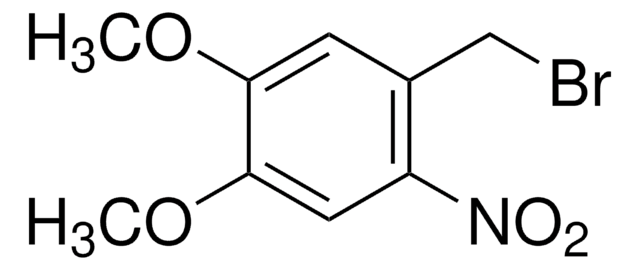613560
TMPyP4, CAS-Nr. 36951-72-1, Calbiochem
≥90% (TLC), solid, telomerase inhibitor, Calbiochem®
Synonym(e):
TMPyP4, CAS-Nr. 36951-72-1, Calbiochem, meso-5,10,15,20-Tetrakis-(N-methyl-4-pyridyl)porphin, Tetratosylat
About This Item
Empfohlene Produkte
Produktbezeichnung
TMPyP4, CAS-Nr. 36951-72-1, Calbiochem, A potent inhibitor of human telomerase (IC₅₀ = 6.5 µM).
Qualitätsniveau
Assay
≥90% (TLC)
Form
solid
Hersteller/Markenname
Calbiochem®
Lagerbedingungen
OK to freeze
desiccated (hygroscopic)
protect from light
Farbe
purple
Löslichkeit
water: 1 mg/mL
Versandbedingung
ambient
Lagertemp.
2-8°C
InChI
1S/C44H37N8.4C7H8O3S/c1-49-21-13-29(14-22-49)41-33-5-7-35(45-33)42(30-15-23-50(2)24-16-30)37-9-11-39(47-37)44(32-19-27-52(4)28-20-32)40-12-10-38(48-40)43(36-8-6-34(41)46-36)31-17-25-51(3)26-18-31;4*1-6-2-4-7(5-3-6)11(8,9)10/h5-28H,1-4H3,(H,45,46,47,48);4*2-5H,1H3,(H,8,9,10)/q+3;;;;/p-3
InChIKey
AKZFRMNXBLFDNN-UHFFFAOYSA-K
Allgemeine Beschreibung
Biochem./physiol. Wirkung
Warnhinweis
Sonstige Hinweise
Izbicka, E., et al. 1999. Cancer Res. 59, 639.
Anantha, N.V., et al. 1998. Biochemistry 37, 2709.
Arthanari, H., et al. 1998. Nucleic Acids Res. 26, 3724.
Wheelhouse, R.T., et al. 1998. J. Am. Chem. Soc. 120, 3261.
Rechtliche Hinweise
Lagerklassenschlüssel
11 - Combustible Solids
WGK
WGK 3
Flammpunkt (°F)
Not applicable
Flammpunkt (°C)
Not applicable
Analysenzertifikate (COA)
Suchen Sie nach Analysenzertifikate (COA), indem Sie die Lot-/Chargennummer des Produkts eingeben. Lot- und Chargennummern sind auf dem Produktetikett hinter den Wörtern ‘Lot’ oder ‘Batch’ (Lot oder Charge) zu finden.
Besitzen Sie dieses Produkt bereits?
In der Dokumentenbibliothek finden Sie die Dokumentation zu den Produkten, die Sie kürzlich erworben haben.
Kunden haben sich ebenfalls angesehen
Unser Team von Wissenschaftlern verfügt über Erfahrung in allen Forschungsbereichen einschließlich Life Science, Materialwissenschaften, chemischer Synthese, Chromatographie, Analytik und vielen mehr..
Setzen Sie sich mit dem technischen Dienst in Verbindung.
